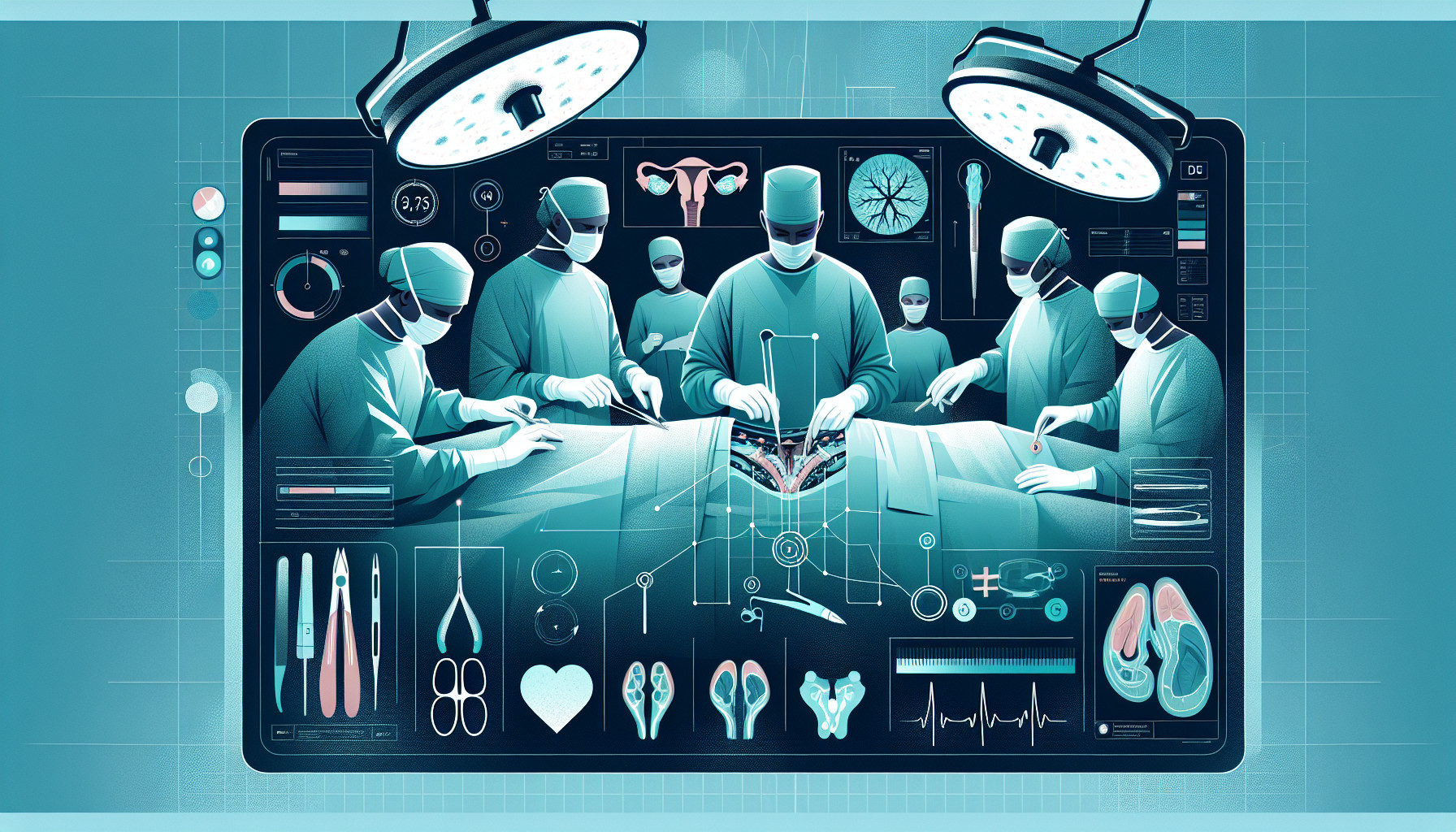Our Summary
This research paper looks into a serious condition that can happen to newborn boys, called perinatal testicular torsion (PTT). This is when a testicle gets twisted either while the baby is still in the womb or within the first 30 days after birth, and often results in the loss of the testicle.
The study looked at the medical records of 62 male patients who were diagnosed with PTT between May 2000 and July 2020. These patients were not born in the hospital where the research was conducted, but were referred there after their diagnosis. The researchers collected data about the patients’ birth, their symptoms, the results of their ultrasound scans, the surgeries they underwent, any complications they experienced, and their follow-up care.
The results showed that 69% of these patients had an abnormal testicle examination at birth. All but one of the patients had an ultrasound scan, and 59 of them had surgery. In some cases, the surgery was done within 4 hours of the diagnosis. In 76% of the cases, both the twisted and the non-twisted testicle were examined during the surgery. Three patients had abnormal tissue (“nubbins”) found during the surgery, and two of these were removed. Three patients had complications that did not need surgery. During the follow-up period, 63 testicles were either removed or found to be non-functional. Some patients showed signs of the remaining testicle growing larger to compensate.
The study concludes that, because 3% of the patients had both testicles affected at different times, and because the use of general anaesthesia is safe in a pediatric hospital, it is recommended that both testicles are examined as soon as possible after PTT is diagnosed.
FAQs
- What is Perinatal testicular torsion (PTT) and when does it occur?
- What was the purpose of the study on Perinatal testicular torsion (PTT)?
- What were the findings and recommendations from the study on Perinatal testicular torsion (PTT)?
Doctor’s Tip
One helpful tip a doctor might tell a patient about testicular surgery is to follow post-operative care instructions closely, including avoiding strenuous activity and wearing supportive underwear to promote healing and reduce the risk of complications. It is also important to attend follow-up appointments to monitor recovery and ensure optimal outcomes.
Suitable For
Patients who are typically recommended testicular surgery include those with perinatal testicular torsion (PTT), which is a catastrophic event that occurs in utero or up to 30 days postnatally. This includes patients with abnormal testicular examination at birth, clinical presentation of testicular torsion, and confirmed diagnosis through Doppler ultrasound. Surgical management is recommended for patients with PTT to assess testicular salvageability and prevent testicular loss. Additionally, patients with asynchronous bilateral PTT may also require surgical intervention. Early bilateral scrotal exploration of PTT is recommended to improve outcomes and minimize complications.
Timeline
- Patient is born with perinatal testicular torsion (PTT), which can occur in utero or up to 30 days postnatally.
- Abnormal testicular examination may be noted at birth, indicating potential PTT.
- Doppler ultrasound is performed to confirm diagnosis of PTT.
- Patient undergoes surgical management, with the possibility of bilateral exploration.
- Surgical findings may include excision of “nubbins” or affected testicles.
- 3% of patients may present with asynchronous bilateral PTT.
- Complications during surgery are rare.
- Follow-up appointments are scheduled to monitor testicular function and potential compensatory hypertrophy.
- Testicles may need to be removed or found to be non-functional in some cases.
- Recommendations for early bilateral scrotal exploration of PTT are made based on study findings.
What to Ask Your Doctor
- What is the likelihood of testicular salvageability in cases of perinatal testicular torsion?
- What are the potential complications associated with testicular surgery for perinatal testicular torsion?
- How soon after diagnosis should surgery be performed for perinatal testicular torsion?
- What is the expected recovery time following testicular surgery for perinatal testicular torsion?
- Are there any long-term implications or risks associated with testicular surgery for perinatal testicular torsion?
- What is the likelihood of developing compensatory hypertrophy in the remaining testicle following surgery for perinatal testicular torsion?
- Are there any alternative treatment options or recommendations for managing perinatal testicular torsion?
- What is the experience and success rate of the medical team in performing testicular surgery for perinatal testicular torsion?
- How often will follow-up appointments be needed after testicular surgery for perinatal testicular torsion?
- Are there any lifestyle changes or precautions that should be taken after undergoing testicular surgery for perinatal testicular torsion?
Reference
Authors: Erlich T, Ghazzaoui AE, Pokarowski M, O’Kelly F, Lorenzo AJ, Bagli DJ, Koyle MA. Journal: J Pediatr Surg. 2022 Oct;57(10):288-297. doi: 10.1016/j.jpedsurg.2021.10.003. Epub 2021 Oct 10. PMID: 34753560
